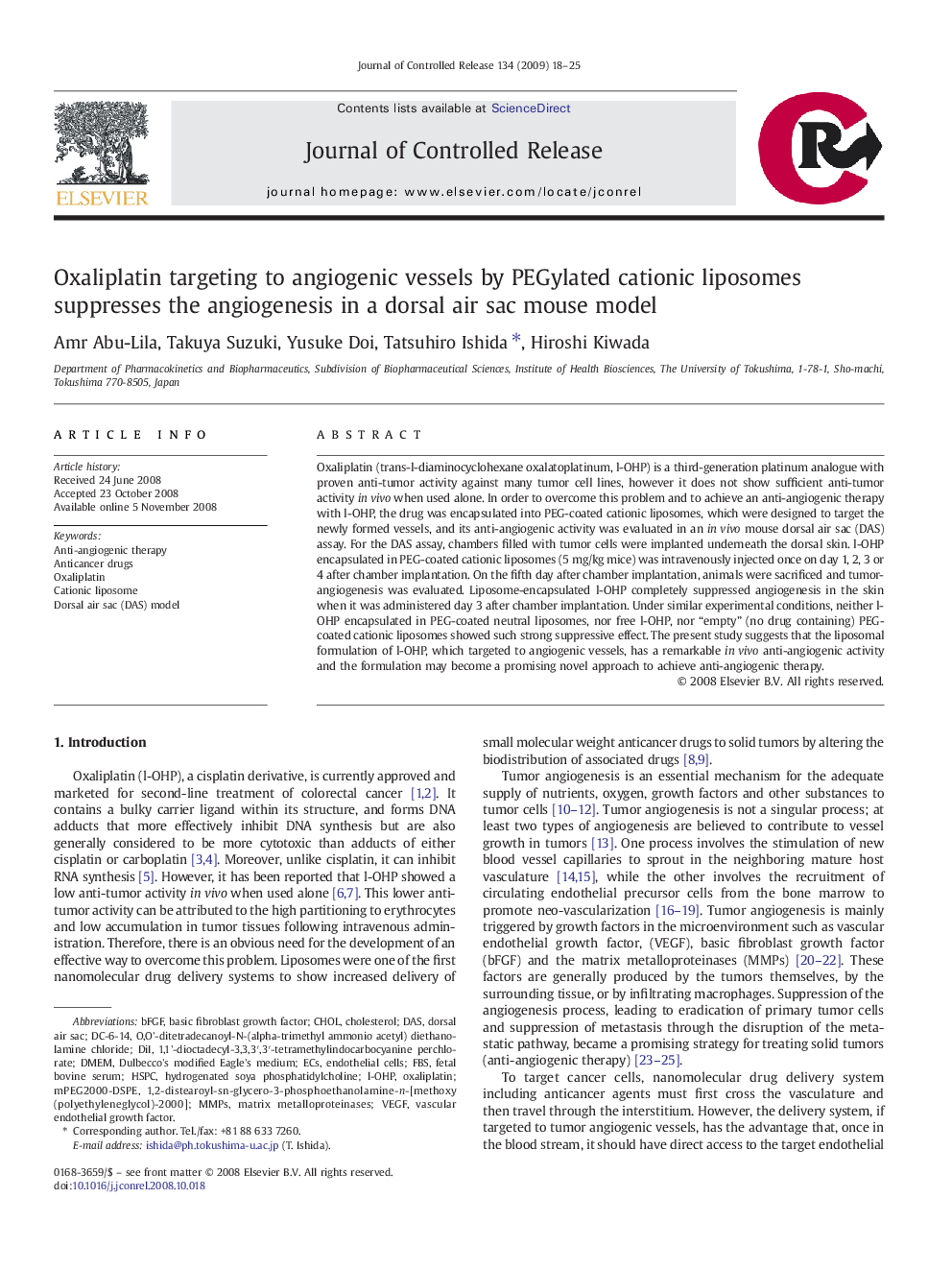| Article ID | Journal | Published Year | Pages | File Type |
|---|---|---|---|---|
| 1426196 | Journal of Controlled Release | 2009 | 8 Pages |
Oxaliplatin (trans-l-diaminocyclohexane oxalatoplatinum, l-OHP) is a third-generation platinum analogue with proven anti-tumor activity against many tumor cell lines, however it does not show sufficient anti-tumor activity in vivo when used alone. In order to overcome this problem and to achieve an anti-angiogenic therapy with l-OHP, the drug was encapsulated into PEG-coated cationic liposomes, which were designed to target the newly formed vessels, and its anti-angiogenic activity was evaluated in an in vivo mouse dorsal air sac (DAS) assay. For the DAS assay, chambers filled with tumor cells were implanted underneath the dorsal skin. l-OHP encapsulated in PEG-coated cationic liposomes (5 mg/kg mice) was intravenously injected once on day 1, 2, 3 or 4 after chamber implantation. On the fifth day after chamber implantation, animals were sacrificed and tumor-angiogenesis was evaluated. Liposome-encapsulated l-OHP completely suppressed angiogenesis in the skin when it was administered day 3 after chamber implantation. Under similar experimental conditions, neither l-OHP encapsulated in PEG-coated neutral liposomes, nor free l-OHP, nor “empty” (no drug containing) PEG-coated cationic liposomes showed such strong suppressive effect. The present study suggests that the liposomal formulation of l-OHP, which targeted to angiogenic vessels, has a remarkable in vivo anti-angiogenic activity and the formulation may become a promising novel approach to achieve anti-angiogenic therapy.
